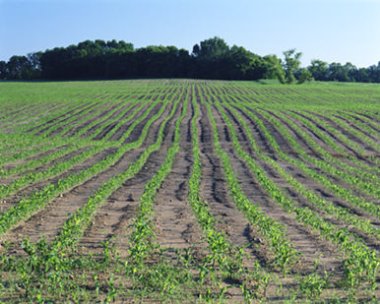What is selenium?
 Selenium is a mineral that is related to sulfur. Plants take up selenium from the soil in the form of selenate, just like they take up sulfur as sulfate. The body contains around 13-20 mg of selenium, of which 50% is stored in the liver. All cells contains selenium. The highest selenium concentrations are found in the sexual glands and in semen.
Selenium is a mineral that is related to sulfur. Plants take up selenium from the soil in the form of selenate, just like they take up sulfur as sulfate. The body contains around 13-20 mg of selenium, of which 50% is stored in the liver. All cells contains selenium. The highest selenium concentrations are found in the sexual glands and in semen.
Selenium is a so-called trace element, which means that it is only found in microscopic (trace) amounts in the diet. Selenium is a component of glutathione which we have in all cells. Glutathione was the first selenium enzyme to be discovered.
Selenium was discovered in 1817 by a Swede named Jöns Berzelius. He named this formerly unknown element after Selene, the Greek moon goddess. The scientific perception of selenium has evolved over time. It was once believed to be extremely toxic, but today it is known to prevent cancer.
1817 The Swedish chemist, Jöns Berzelius, discovers selenium
1930 Selenium is considered extremely toxic
1941 Science discovers that selenium is an essential trace element for living tissue
1943 Selenium is considered a carcinogen
1949 Selenium is shown to prevent liver tumors in rats
1957 The researcher, Klaus Schwarz, shows that microscopic amounts of selenium are essential to human health
1966 Selenium is believed to prevent cancer
1973 The first seleno-protein, glutathione peroxidase (GSH-Px), is discovered
1996 The American scientist, Larry Clark, astonishes medical science by demonstrating that selenium can inhibit several cancer forms
2000 Margaret Rayman, a British researcher, shows that selenium is vital for human health on several different accounts
In the soil, selenium is found in its inorganic form. Precipitation breaks down selenium in smaller pieces (parts) that plants and bacteria can absorb from the soil. Plants only absorb inorganic selenium from the oil. Inside the plant, inorganic selenium is converted to organic selenium by means of photosynthesis. Animals eat the plants and get selenium that way. We humans get selenium, either from eating plants or by consuming meat from cattle that has eaten the plants. That is how selenium moves through the entire food chain.
The difference between inorganic and organic selenium is that organic selenium contains carbon. Carbon improves the absorption of selenium in the body and is also a less toxic form of the compound. Animals and bacteria absorb both inorganic and organic selenium.
Selenium is a mineral that is found in the ground, just like gold, uranium, and iron. Humans get more or less selenium from their diet, depending on where they live, as the selenium content in soil varies from one region to another.
Apart from the geographical location, farming methods also determine how much selenium you get from your diet. Because of the intensified farming methods we use today, more plants are cultivated in the same space but the amount of selenium in the soil remains unchanged, leaving less selenium for each plant to absorb.
This causes the selenium content in crops to drop. Consequently, the selenium content in grazing cattle is also reduced. The result of this selenium reduction is that we humans get far less selenium than we used to.
In many countries, authorities have corrected this imbalance by adding selenium to animal feed, acknowledging that this helps to prevent disease in the animals.







